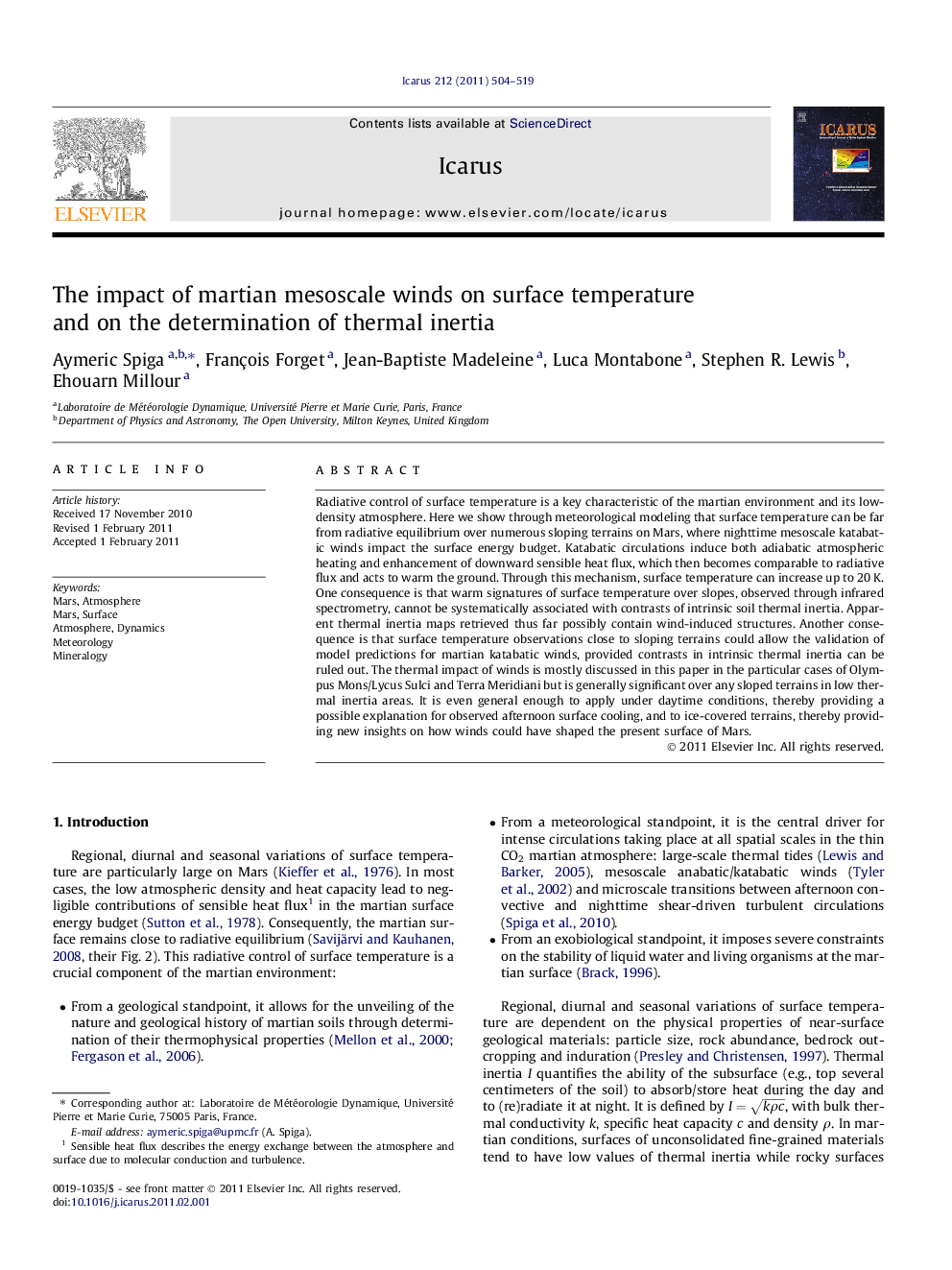| کد مقاله | کد نشریه | سال انتشار | مقاله انگلیسی | نسخه تمام متن |
|---|---|---|---|---|
| 1774578 | 1021169 | 2011 | 16 صفحه PDF | دانلود رایگان |

Radiative control of surface temperature is a key characteristic of the martian environment and its low-density atmosphere. Here we show through meteorological modeling that surface temperature can be far from radiative equilibrium over numerous sloping terrains on Mars, where nighttime mesoscale katabatic winds impact the surface energy budget. Katabatic circulations induce both adiabatic atmospheric heating and enhancement of downward sensible heat flux, which then becomes comparable to radiative flux and acts to warm the ground. Through this mechanism, surface temperature can increase up to 20 K. One consequence is that warm signatures of surface temperature over slopes, observed through infrared spectrometry, cannot be systematically associated with contrasts of intrinsic soil thermal inertia. Apparent thermal inertia maps retrieved thus far possibly contain wind-induced structures. Another consequence is that surface temperature observations close to sloping terrains could allow the validation of model predictions for martian katabatic winds, provided contrasts in intrinsic thermal inertia can be ruled out. The thermal impact of winds is mostly discussed in this paper in the particular cases of Olympus Mons/Lycus Sulci and Terra Meridiani but is generally significant over any sloped terrains in low thermal inertia areas. It is even general enough to apply under daytime conditions, thereby providing a possible explanation for observed afternoon surface cooling, and to ice-covered terrains, thereby providing new insights on how winds could have shaped the present surface of Mars.
► Surface temperature on Mars can be impacted by mesoscale winds.
► Warm surface on slopes at night can be fully explained by wind-induced effects.
► Apparent thermal inertia retrieved thus far possibly contains atmospheric artefacts.
► New constraints on modeled slope winds and thermal inertia retrievals are obtained.
► Mechanisms also apply to afternoon cooling and ice stability on the surface.
Journal: Icarus - Volume 212, Issue 2, April 2011, Pages 504–519